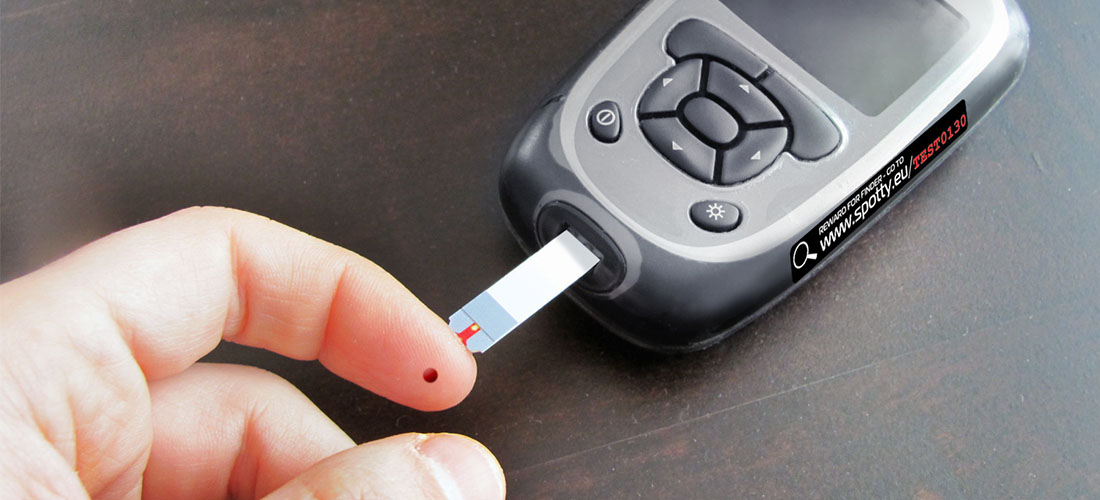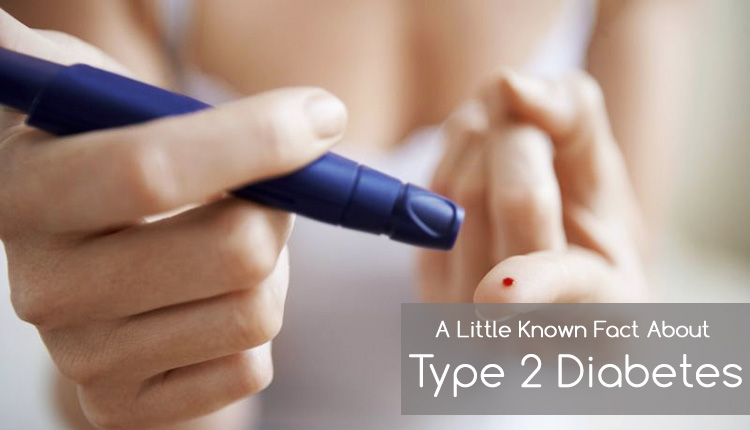 It has been more than two years now since my father has been diagnosed with Type 2 diabetes. I could fathom then that somehow it was a result of his rich eating habits and lack of exercise.
It has been more than two years now since my father has been diagnosed with Type 2 diabetes. I could fathom then that somehow it was a result of his rich eating habits and lack of exercise.
What took me by surprise though, was when my mother was recently diagnosed with prediabetes even though she had always been physically active and never had a sweet tooth. However, being a typical mother she remained stressed all the time.
My mother, before her diagnosis, often told me, “Stop eating sweets and chocolates, or else you might develop diabetes just like your father!”
I never paid heed to her words. However, her diagnosis revealed that she is in the danger zone as well which led me to think that this could increase my chances of being a diabetic too!
Considering my family history, I wanted to learn more about this illness. And maybe you should too.
The worldwide scenario
Contents
Did you know that diabetes, one of the most widespread diseases, affects every 10th person in the world in the present day?
This could be attributed to the rising level of obesity which is a major cause of diabetes. Technological advancement makes everything easily available to us with a click, which apparently is pushing us towards a sedentary lifestyle.
No wonder, diabetes turned out to be the 7th leading cause of death in United States in 2010.
Pre-diabetes: A warning bell
In most cases, before you are diagnosed with full-blown diabetes (type 2), you lie in a gray area commonly known as borderline diabetes or pre-diabetes. This is the stage where the level of glucose is higher than normal, but not high enough to cause diabetes.
Prediabetes is dangerous because most of you might not even know that you have it!
This condition often develops gradually without throwing us any noticeable warning signs. However, the good news is that if diagnosed at the right time, you can reverse it.
You should rush to get yourself checked if
- You are older than 45
- You are overweight
- It runs in your family
- You are physically inactive
- You have high blood pressure
- Had diabetes during pregnancy
- Have a history of heart disease
You must note that prediabetic patients, like my mother, are already at a higher risk of heart disease and other complications like impaired eyesight, and kidney failure because of the high level of glucose.
Diagnosis and Self-diagnosis
Don’t panic! You don’t need to rush to the doctor for a preliminary check. You can do it at home using a blood glucose meter.
All you need to do is prick your finger with a lancet (provided with the kit) and release the drop of blood into the disposable test strip. The meter will then read and calculate your glucose level.
You are pre-diabetic if your blood sugar level:
- During overnight fasting is 100-125 mg/dL, and
- After 2 hours of fasting and drinking a glucose-rich beverage is 140-199 mg/dL.
There are mainly two tests your doctor may ask you to get done:
- Fasting plasma glucose test (FPG): Your glucose level is measured after fasting overnight and the next day two hours later after a drinking rich beverage.
- A1c test, or hemoglobin A1c level: It measures the average blood sugar levels during the past 3-4 months. You do not need to fast for this test.
How You Can Test Your Blood Sugar Using Diabetes Strips
You can easily test your blood sugar (glucose levels) using Diabetes Test Strips aka Glucose Meter Strips. As the name suggests, these strips work with glucose meters to measure your blood sugar levels.
Once you know your blood sugar level, you can manage your disease better as you get an idea about the food you’re consuming and activities you’re doing that contribute to your blood sugar.
How to use the strips
- Put a test strip into your blood glucose meter.
- Prick your fingertip with the meter’s tiny needle ~ the lancet.
- Squeeze out a drop of blood and touch it with the edge of the test strip. Within seconds, the glucose meter will give you a blood sugar reading.
Note: You can only use a test strip once.
Your doctor can guide you on how often you should check it. For type 1 diabetes, it can be upto 10 times a day. For type 2 diabetes, it is usually twice a day.
Okay, I am a pre-diabetic. Now what?
If you bring moderate changes in your lifestyle, you can delay the development of type 2 diabetes.
Could fasting be the answer?
Possibly!
While looking for answers, I came across a piece of interesting news about a research done at Intermountain Heart Institute, Utah. It was found that periodic fasting up to 10-12 hours could potentially reverse prediabetes.[1]
Now what kind of fasting?
Just a 24 hour fast every week.
Benjamin Horne, the lead researcher of the study says that such periodic fasting increased cholesterol levels initially but over a six-week period time, the overall levels were decreased up to 12 percent combined with weight loss.
Isn’t that good news?!
All you need to do is survive on water for one day a week. This is like a toxin cleanse for me!
Want to know the reason behind this theory?
Hunger is a kind of stress that our body is not used to, so just like in times of other kinds of stress (extreme temperature, anger, physical exertion, etc.) it releases cholesterol to cope with it. This was the reason of the initial cholesterol increase.

Also, glucose level decreases when you fast, which is the main source of energy for the body, so it is left with no choice but to burn your fat cells to be used as fuel and keep the body running. This explains the added weight loss.
The researchers are, however, still willing to conduct more studies to back up these findings.
Another type of fasting that you can go for is intermittent fasting.[2] It includes having meals during a specific window in a day, for example, eating at regular intervals for 12 hours and then no food for next 12 hours.
However, before starting any of these diets you must consult your doctor.
The right food and proper exercise: The Golden key
If you aren’t ready to fast for a day or stay hungry for long hours then this is what you can do to keep diabetes at bay.
- Begin by cutting down your daily intake of carbs and fats. Include more fiber in your diet. This will fill you up without contributing much to your sugar levels. The essential fat that our body requires is 2-5% for men and 10-13% for women. You need more if you are an athlete or overweight. Check your body fat percentage here.
- Maintain your protein intake. Avoid red meat, go for low-fat meat, drink skimmed milk.
- Drink fresh lemon juice every day. It helps to regulate your blood sugar level and eliminates toxins. Also, it has anti-oxidant and anti-bacterial qualities, so it strengthens your immune system.
- Walk as much as you can. Staying physically active will restrict glucose from building up in your blood which will keep your weight in control as well.
- Get enough sleep. Insufficient sleep makes it harder for your body to use insulin effectively as it secretes more stress hormones. [3]
Your overall aim should be to consume fewer calories.
Closing thoughts
It is a myth if you think that diabetes is not a serious disease. You are more likely to die of a heart stroke if you have diabetes. This is why when my mom discovered her condition, she geared up for the challenge.
In a span of 2 months, she has dropped 12 pounds just by adding an hour of walk daily. Her glucose level has gone down significantly and her A1c level came down to 5.8. And now her doctor is hopeful that she would soon be off medication if she continues with this lifestyle.
If my mother can do it at the age of 47, I’m sure you can too. She inspired my father to bring changes in his lifestyle as well.
Being a prediabetic is not a threat. See it as an opportunity to take charge of your life.
References: [1]Dorr, D., Wilcox, A., Burns, L., Brunker, C., Narus, S., & Clayton, P. (2006). Implementing a Multidisease Chronic Care Model in Primary Care Using People and Technology Disease Management, 9 (1), 1-15 DOI: 10.1089/dis.2006.9.1. ^Back to Top^ [2]Brown, J., Mosley, M., & Aldred, S. (2013). Intermittent fasting: a dietary intervention for prevention of diabetes and cardiovascular disease? The British Journal of Diabetes & Vascular Disease, 13 (2), 68-72 DOI: 10.1177/1474651413486496. ^Back to Top^ [3]Spiegel, K. (2005). Sleep loss: a novel risk factor for insulin resistance and Type 2 diabetes Journal of Applied Physiology, 99 (5), 2008-2019 DOI: 10.1152/japplphysiol.00660.2005^Back to Top^
Last Updated: June 26th, 2014
Next Scheduled Update: Aug 26th, 2014







Comments are off this post!